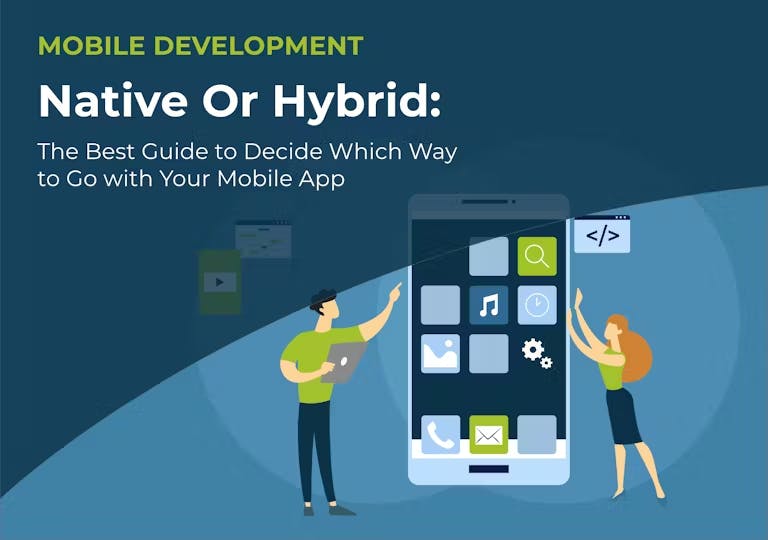Native or Hybrid: A Guide to Decide Which Way to Go with Your Mobile App


The early 2000s brought us mobile apps, and they’ve been getting more and more popular ever since. Users are downloading tons of mobile applications, and the industry is expected to generate revenue over $613 billion USD in 2025 according to Statista. With such a big opportunity out there, many businesses are developing an app to reach their customer base right on their mobile devices.
But where to begin? How will you make sure it’s a user-friendly app? Do you want React Native solutions, or are you looking for specific smartphone platforms to launch on? If this is as clear as dishwater to you, we have good news: you’re in the right place.
This comprehensive guide to building an app will help you make key decisions about your mobile development project. Whether you have an in-house team of software developers, plan to augment your staff, or want to outsource the project, you’ll find answers here.
What is a Native App?
In a broad sense, native software is designed to run on a specific operating system (OS). Native applications have a somewhat different context during development because they’re installed on smartphones. After all, there are more variables with mobile devices. Screen size and device location can vary, for example. But like computers, phones and tablets do have their own OS, such as iOS and Android.
A native app won’t work on both OS types. Some exceptions are obvious, like the Apple TV remote app only being on iOS. Others are less intuitive and were only launched for one smartphone OS simply because the developer chose to do that. Ultimately, a native app will be found in the application store of the OS it was made for. Because it was created for a particular operating system, this type of app can also use the integrated features of the mobile device it’s installed on. As an example, push notifications can keep the user updated with what’s going on in the app even if they don’t have it open.
What is a Hybrid App?
To really understand the hybrid structure for this kind of mobile app, you’ll need to know what they combine: native apps and web apps. You already know native apps live on mobile devices, but web apps can be accessed through a browser. If you share Google Docs files by inviting users on your tablet, that’s a mobile app. If you’re listening to Spotify in Chrome, that’s a web app.
A web application could use HTML5, JavaScript, and CSS to function. For a hybrid app, container frameworks are used to turn your non-native app into a native app. Some frameworks include:
- React Native
- Flutter
A native container framework is also known as a native harness or wrapper. By any name, the rose is just as sweet! It cuts back on development time by building from what you already have. Plus, this type of cross-platform mobile app still includes many helpful features available on native apps, such as accessing contact lists to connect with friends, using the camera to share pictures, and so on.
Subscribe to our newsletter
Stay informed with the latest insights and trends in the industry
You may also like


